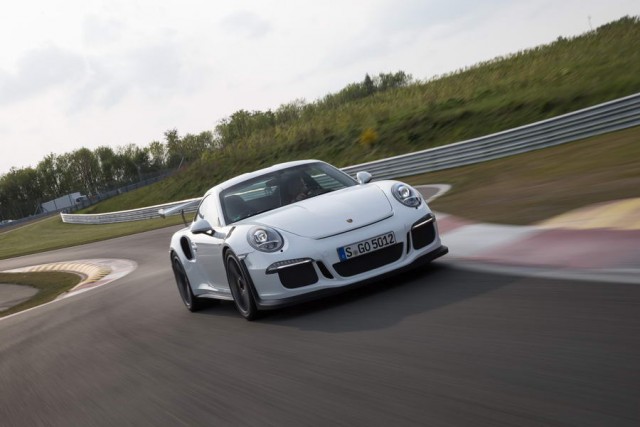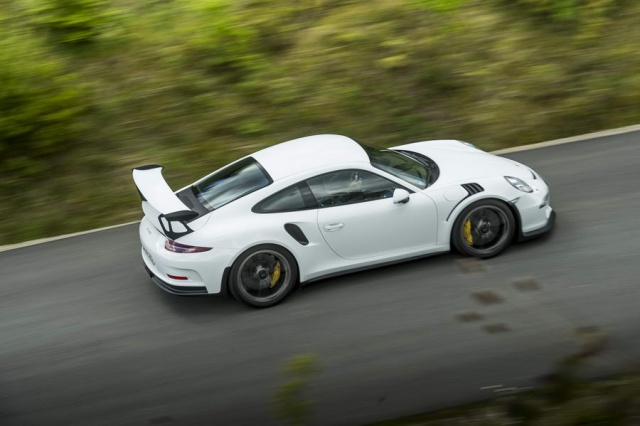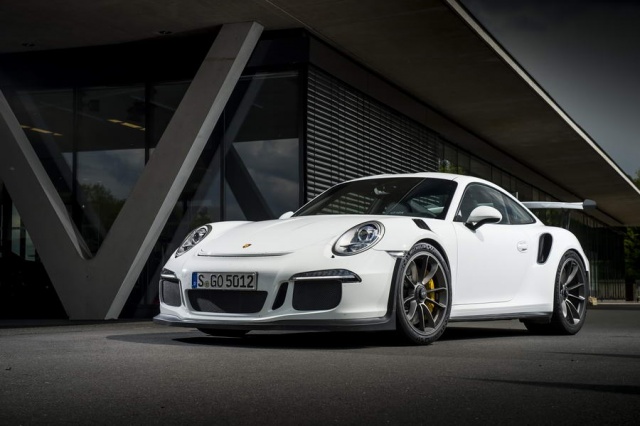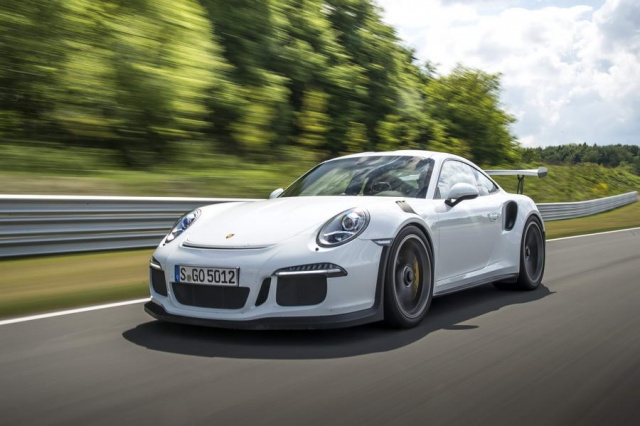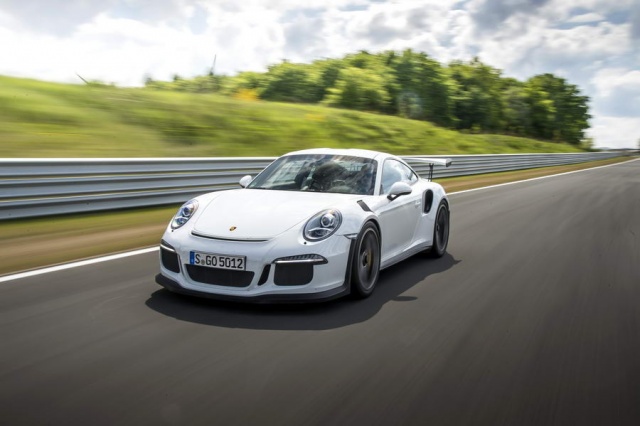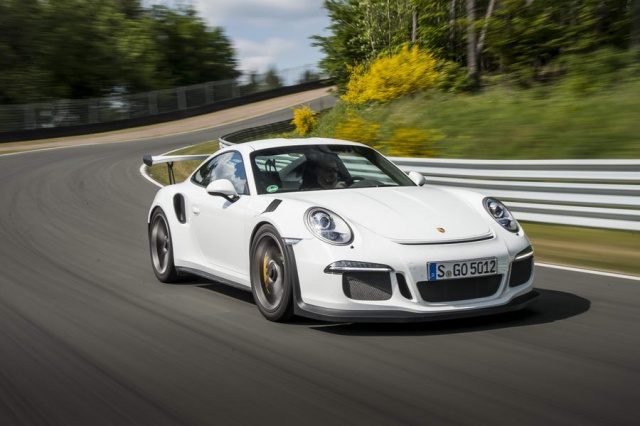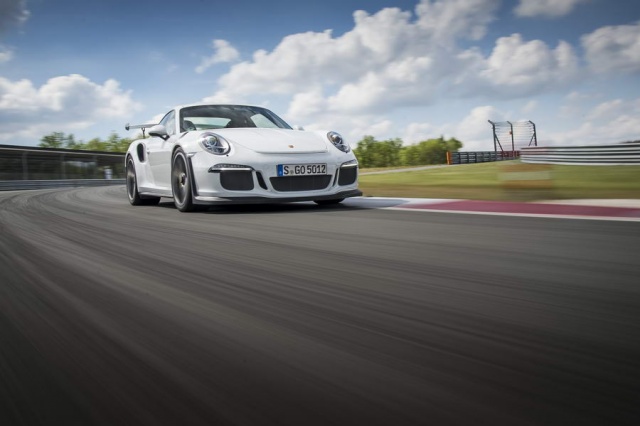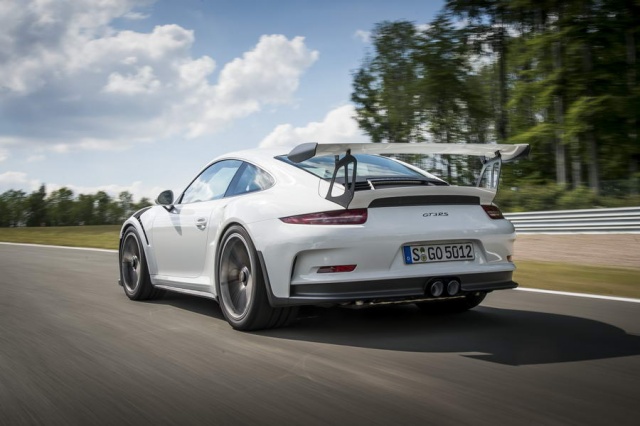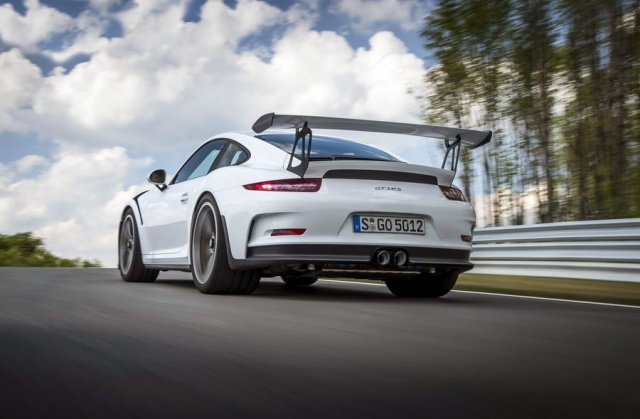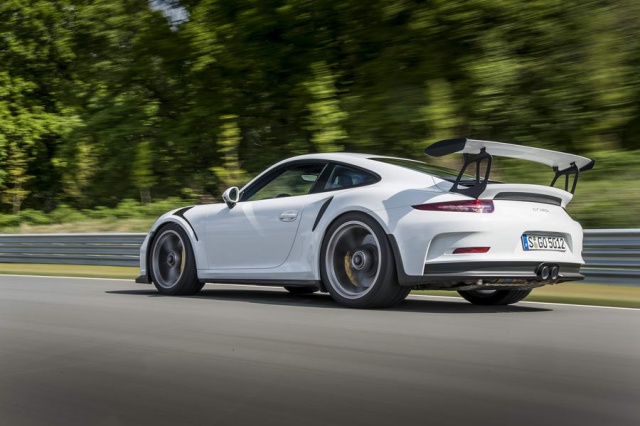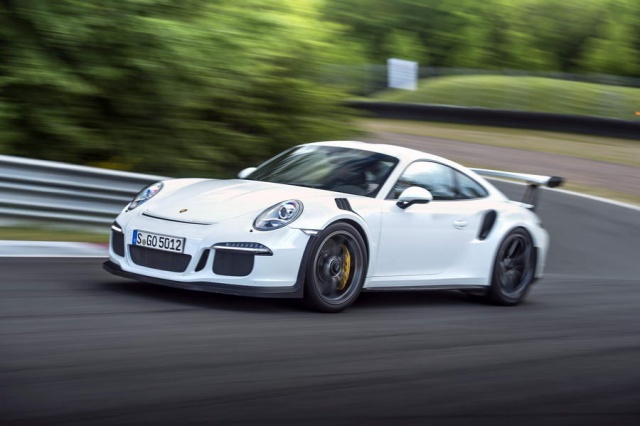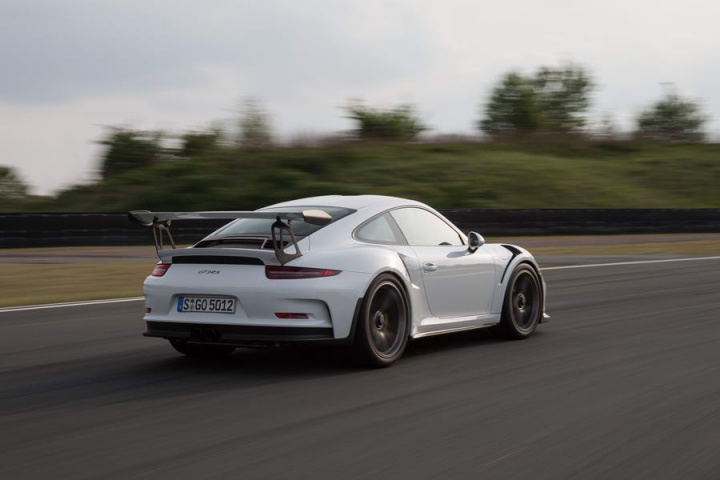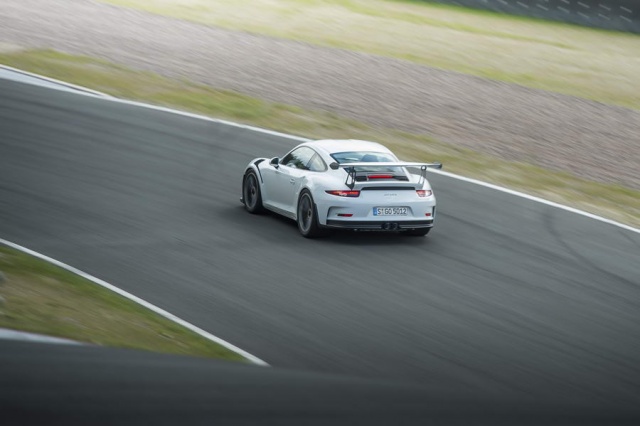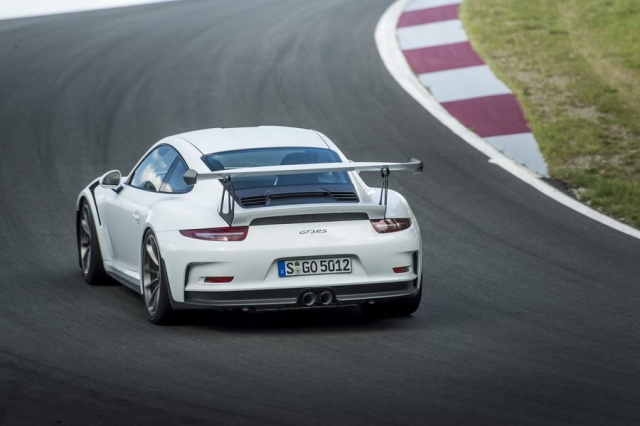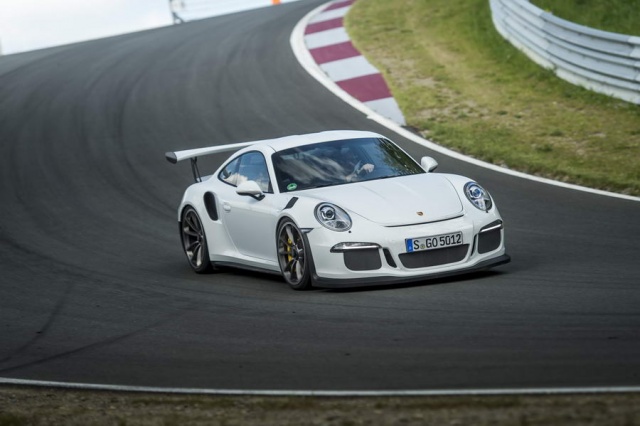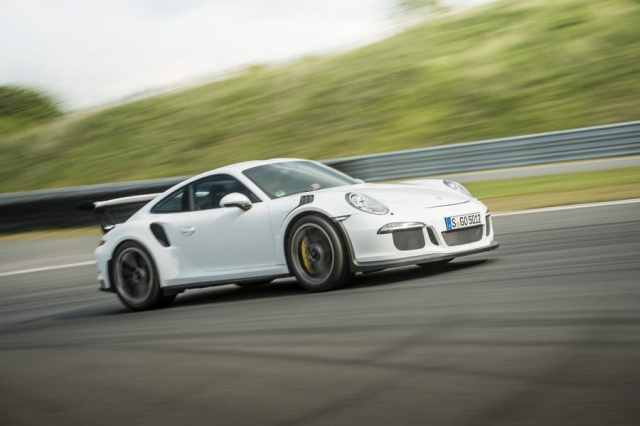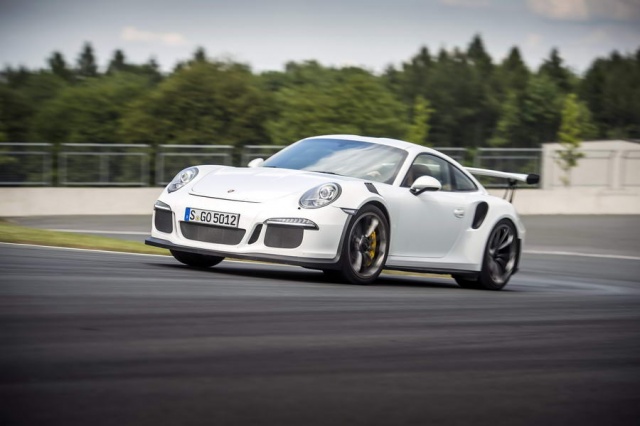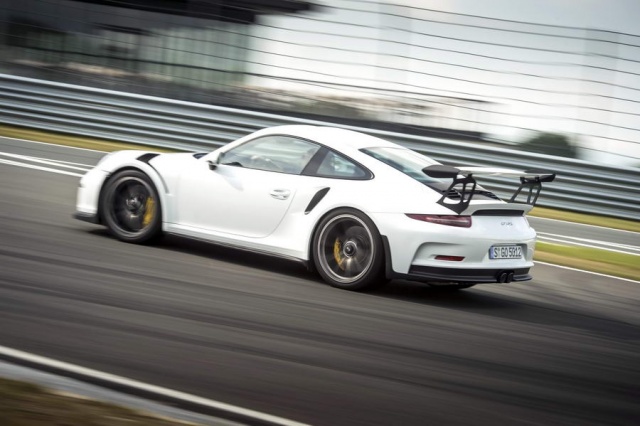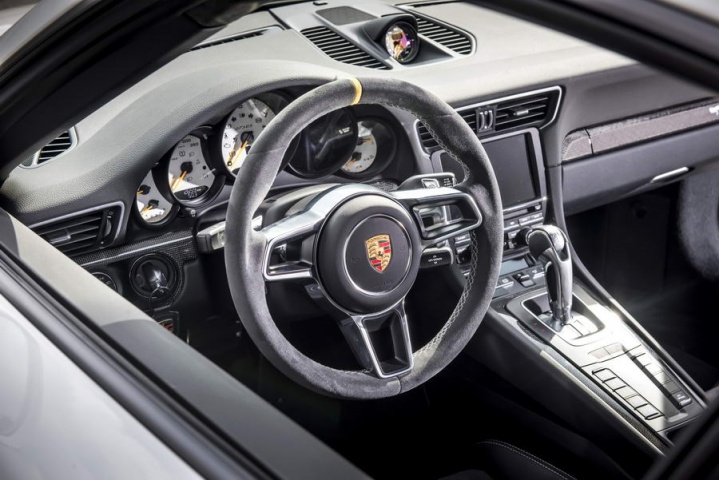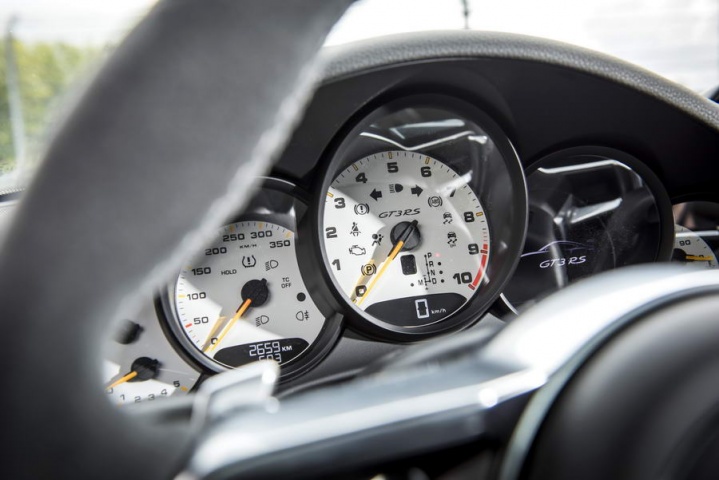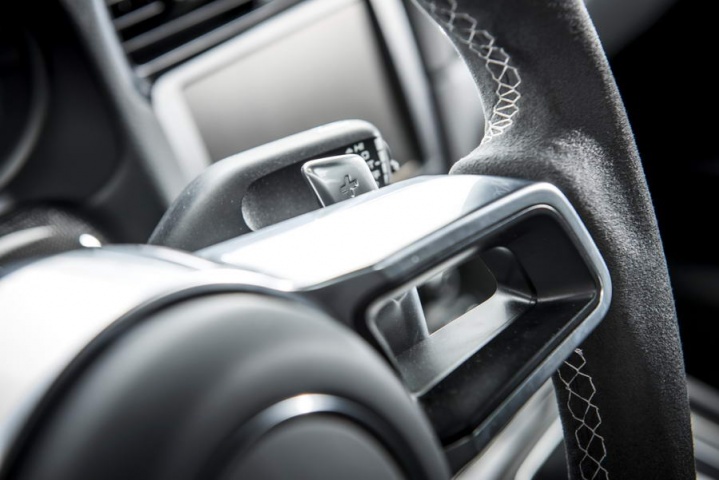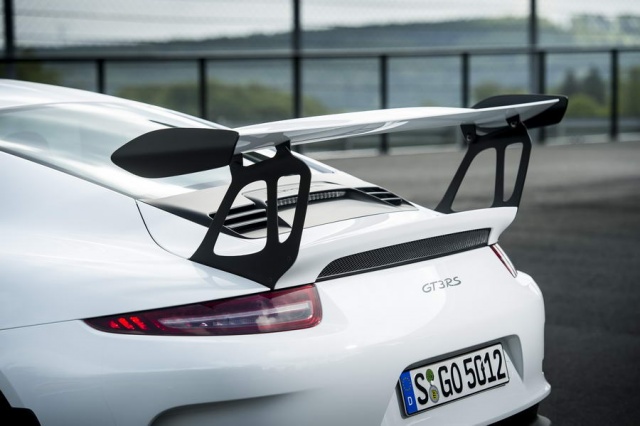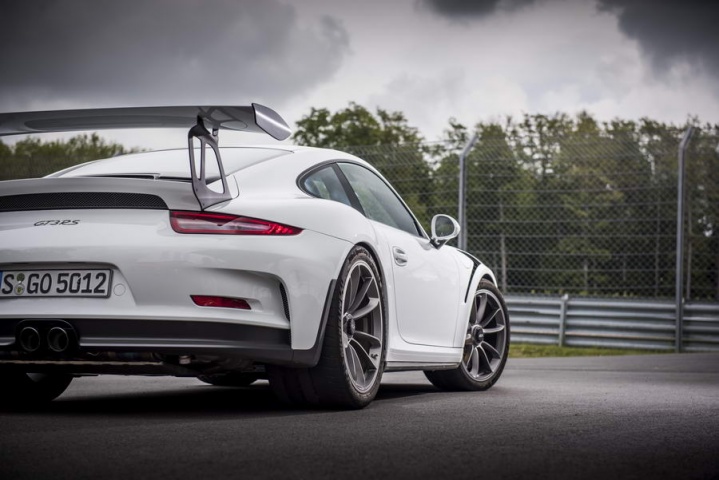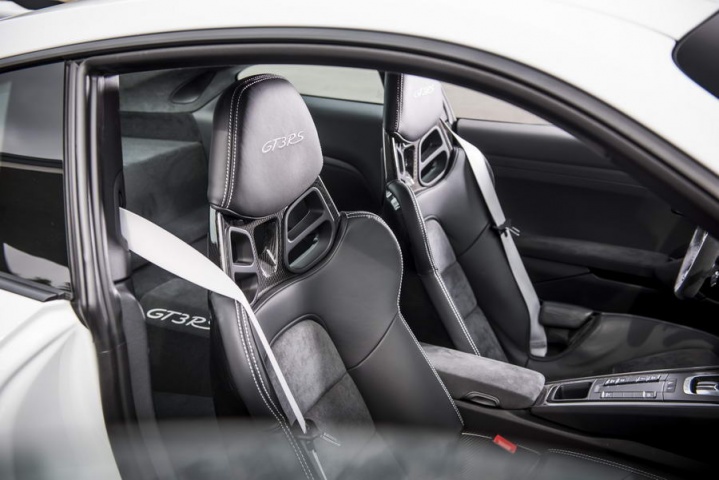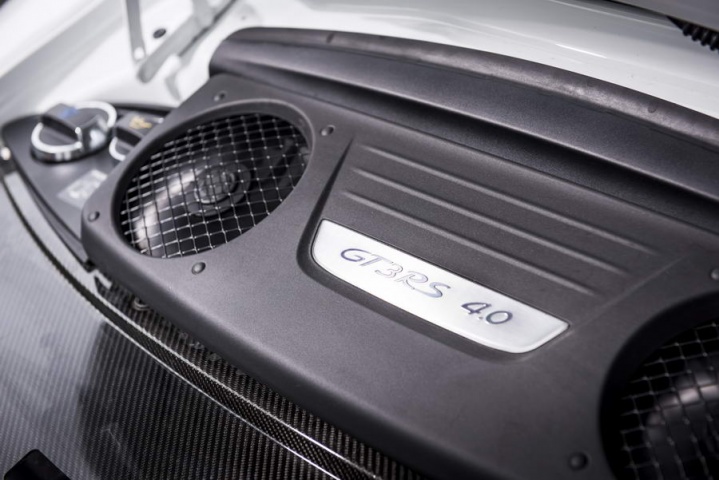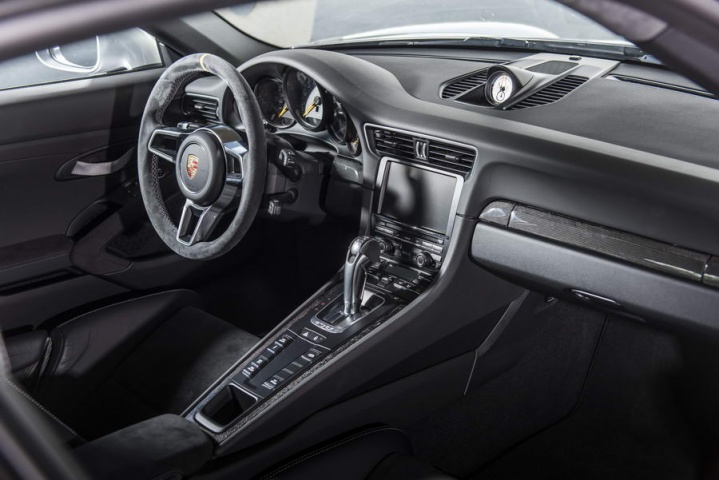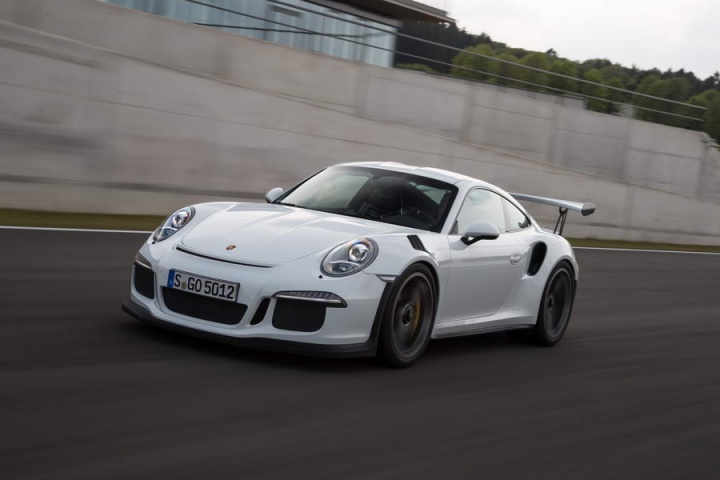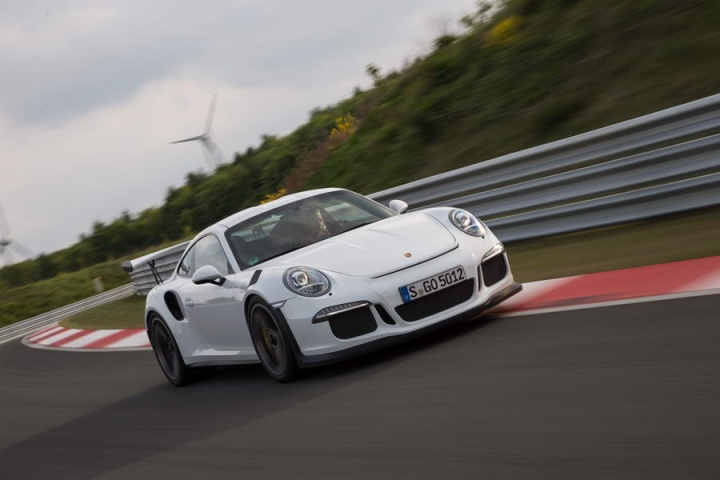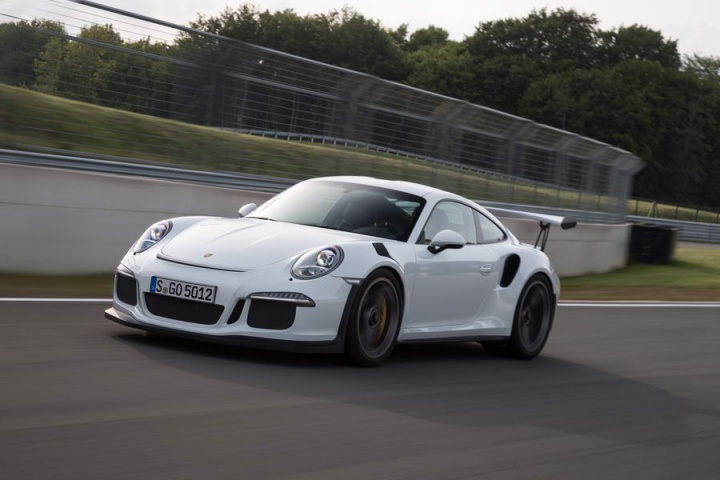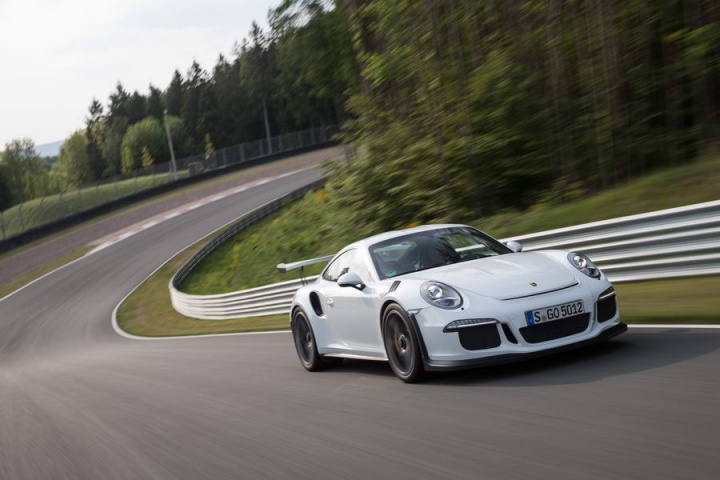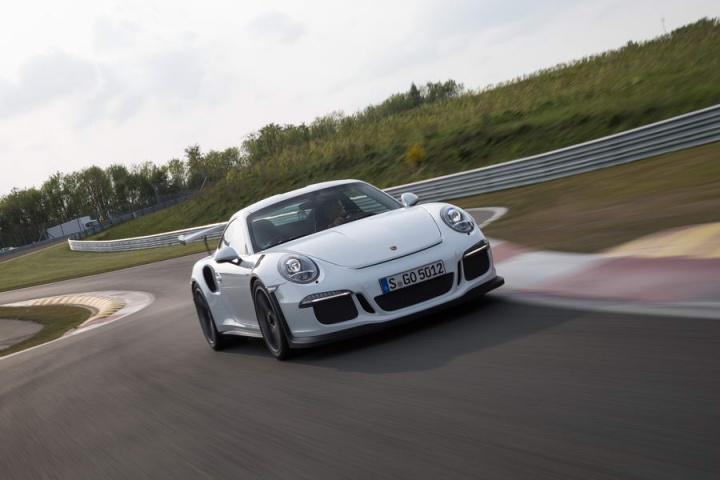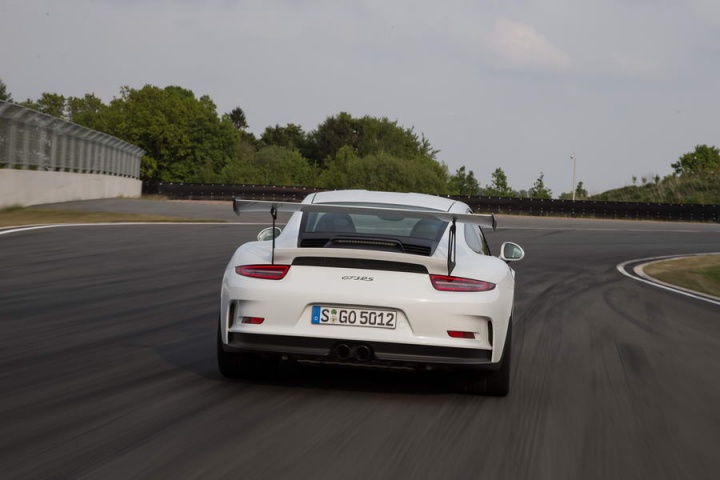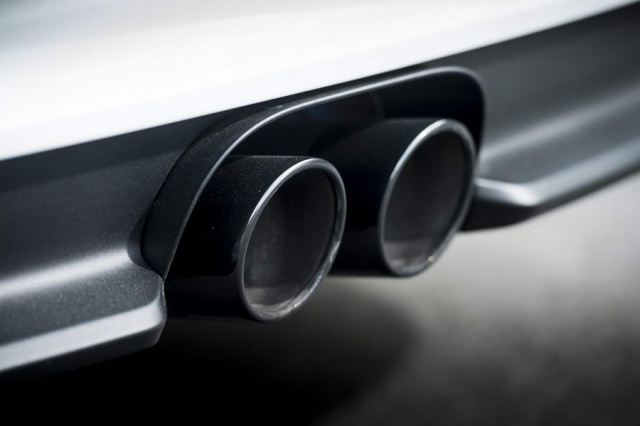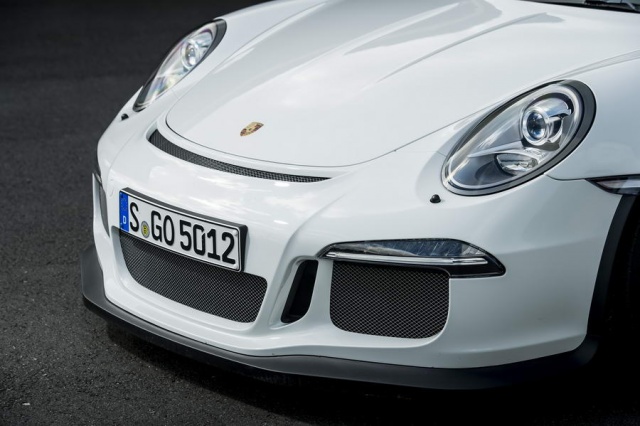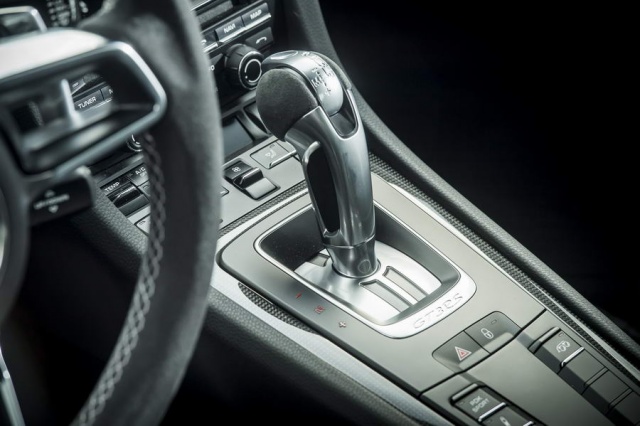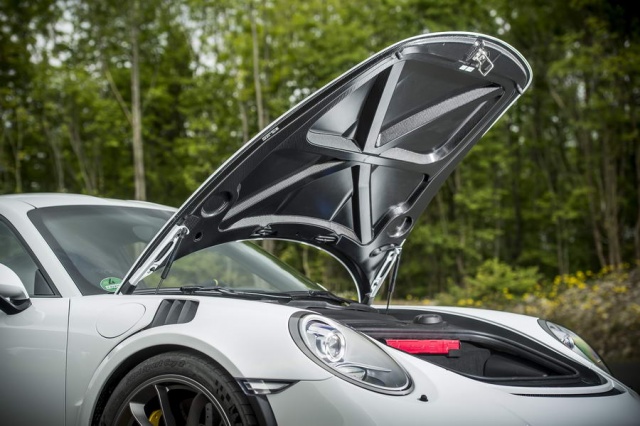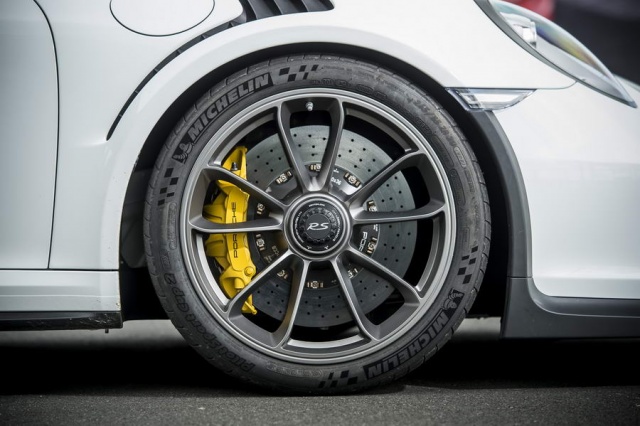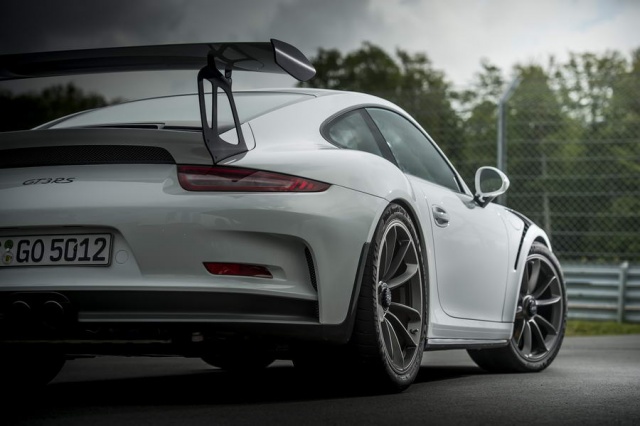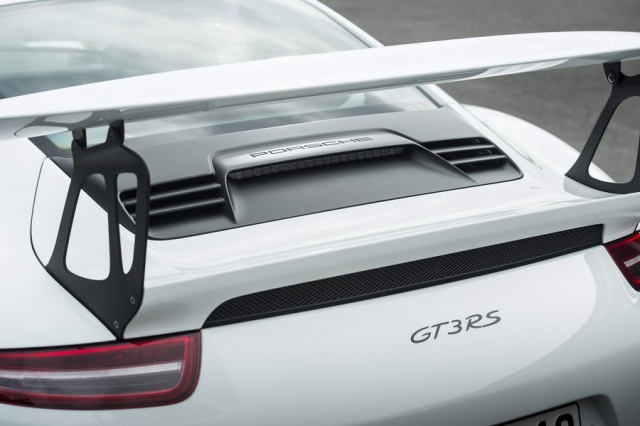Under review here is the Porsche 911 GT3 RS, which has dropped weight, gained power - and width - to deliver the most intense 911 experience possible. Huge performance, impeccable poise, unerring agility and endless grip take it to new levels on track. That's arguably to its detriment on road, where it's all but impossible to experience the full spectrum of what's it's capable of.
In the metal
More than any Porsche 911 GT3 RS before it, the 991-based model looks every bit the homologation special - only a set of stick-on numbers and a sponsor livery away from its racing relatives. It's impossible to ignore the massive rear wing, those vented outlets above the front wheels and unique front and rear bumpers. The GT3 RS wears its wind-tunnel honing unashamedly, as this road car can produce genuine downforce - at levels around 80 per cent of that produced by its racing car relation. There's a wider body, borrowed from the 911 Turbo, allowing Porsche's GT department to better manage the airflow to the heavily revised engine. Induction air finds its way to that enlarged, 4.0-litre, flat-six via the intakes positioned forward of the rear alloys. Those wheels are pretty special too, swelling to an almost cartoonish 21 inches at the back (the fronts remain the same as the regular 911 GT3 at 20 inches in diameter) fitted with Michelin Pilot Sport Cup 2 tyres that are borrowed from the 918 Spyder hypercar.
Despite using the wider body from the Turbo, as well as the larger wheel and tyre package, the GT3 RS weighs in at around 10kg lighter than a GT3. That's thanks to Porsche's attention to detail, such as a 1mm thick magnesium roof and carbon-fibre body panels up front. The weight can be pared back more with options like a lithium-ion starter battery and no-cost delete option of the air conditioning and entertainment systems. In keeping with its pedigree, the engine changes include a crankshaft that's made from the same vacuum repeat heated, high strength, hugely pure steel as Porsche's 919 WEC prototype racer.
The pared back, performance-orientated feel continues inside. There are sports bucket seats, a smaller diameter Alcantara-covered steering wheel and, if optioned (for free), a half cage that fills the space in the rear. There are, as ever in a 911 RS model, no rear seats, while RS-specific lightweight door cards with strap-pull handles, Plexiglas rear and side windows and the possibility to delete option the air conditioning and infotainment systems underline Porsche's authentic weight-saving measures that define its most focused RS models.
Driving it
Raising the already high bar set by the standard 911 GT3 is no mean feat, but the RS's incremental changes elevate it to a higher position still. It's deliberately more different to the regular car than in previous RS incarnations. That much is obvious just from its looks, but it's underlined on the road - and more specifically the track. Porsche's GT department boss Andreas Preuninger might be on record as discussing the futility of chasing Nürburgring lap times, but that's not stopped the company from sending the RS around the famous track to set a seven-minute 20-second time. Putting it in context, that's around nine seconds quicker than a Carrera GT supercar and was apparently set on a partially wet track. There's more to come, then - Porsche reckons that in perfect conditions the GT3 RS would shave at least three seconds off that time.
Fundamental to the RS's mighty track capability is its aerodynamics. The aero revisions over the GT3 allow it to produce 345kg of downforce, without creating a huge penalty in drag. Mechanical grip is aided by the huge tyre selection, as the contact patch for the tyres is up by 20 per cent at the front and 18 per cent at the rear. The suspension has been altered to match the new tyre and aero demands placed upon it, the majority of the linkages getting ball joints rather than rubber bushes. RS-specific steering, to both the rack and the rear-wheel steering set-up, improves the turn-in speed, as well as high-speed stability. The engine, enlarged to 4.0 litres thanks to a longer throw crank, features new valvetrain, a new oil pump and dry sump lubrication, a titanium exhaust and an induction system that benefits from a performance air filter and ram air effect that actually ups the power output by around 13hp when running at its maximum speed.
On the road, all those changes manifest themselves with greater mid-range force from the engine, it feeling markedly more flexible at lower revs than the GT3's 3.8-litre unit does. The more focused suspension and larger tyres do little to upset the ride either, so it's remarkably compliant given its obvious focus - on smooth German tarmac at least. The steering feels more alert and turn-in is claimed by Porsche to be improved by as much as 30 per cent over the standard GT3. What's genuinely surprising is the GT3 RS's usability on the road - though you might like to option the nose lift kit if you don't want every ramp or speed bump to be a chin-scraping nightmare. Some of that user-friendliness is inevitably down to the standard PDK paddle-shifted automatic transmission, which also allows the fitment of a fully variable electronically controlled differential with torque vectoring. This GT3 RS loses its predecessor's sometimes recalcitrant nature too so there's no chuntering from the transmission or differential. Preuninger is unapologetic in the GT3 RS's PDK fitment, saying that it's all down to being the fastest - he points out that the Cayman GT4 exists for those customers that want a three-pedal, manually-shifted Porsche GT product.
On the road, that does makes the RS feel a touch ordinary, largely because it doesn't need managing like the old cars, and as its performance levels are so lofty it's all but impossible to approach them at road speeds. To really explore the GT3 RS's capability requires a track. Porsche choose Bilster Berg in Germany, for us to review it on-circuit ability.
What's immediately evident on the track is just how much further the RS moves the game forward over the GT3. The 0-100km/h time drops to 3.3 seconds for a start, thanks to sensational traction; while the PDK gearbox's instantaneous response to demands at the paddles is inconceivably quick. The performance from the enlarged engine is savage from low revs right round to the 4.0-litre's slightly lower - but still stratospheric - 8,800rpm red-line. To experience the flat-six engine tearing through the last couple of thousand revs is an absolute joy. Its peak 500hp is produced at 8,250rpm and the sound that accompanies it is near race car in its intensity.
The noise and pace aren't the only similarities with racing cars; the GT3 RS's responses are so improved it requires some recalibration of your expectations of what's possible. The turn-in is immediate, and the 911's usual trait of a light nose not present, so the GT3 RS feels more mid- than rear-engined in its steering response. There are masses of grip, so the nose is resolute in its line, though back off and, even with the stability and traction systems on, the RS will adjust its line quickly. The steering's weighting is excellent, even if there's little in what can realistically be called feel at the rim. It's the best steering 911 yet, the most stable, too, and the grip on offer is nothing short of incredible. The chassis remains as adjustable as any 911's, though the limits are so much higher and the speed at which it happens requires a confident driver to exploit. That's always been something of an RS characteristic, it appealing to exactly the sort of hardcore driver who'll use it on track, frequently. Even existing GT3 RS owners might be surprised at the leap in agility, grip and performance on offer.
What you get for your money
The 30 per cent or so premium that a GT3 RS represents over a standard GT3 looks like a bit of a bargain. You'd need something like a Ferrari 458 Speciale to keep up with this car, though the GT3 RS has always been a big-hitter in the value stakes. Standard equipment is comprehensive, so the only option we'd suggest going for are the PCCB carbon ceramic brakes for their stupendous fade-free track performance, and the nose lift kit to add to the RS's usefulness on the road.
Summary
The 911 GT3 RS takes Porsche's usual incremental route to creating a more hardcore model: shedding weight, adding power, increasing grip and honing the aerodynamics, each to modest, but worthwhile levels. The net result is a car that's more distinct than previous RS models, increasing the gap between it and the standard GT3 to quite staggering degrees. That's arguably at the expense of some of its on-road enjoyment, as the RS's performance is now so otherworldly that it's impossible to really exploit and enjoy it on the road. The wider body doesn't help with that either. It's the ultimate 911 then, which looks preposterously good value and it's little wonder all 2,000 Porsche will build have already been snapped up.

